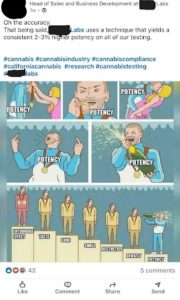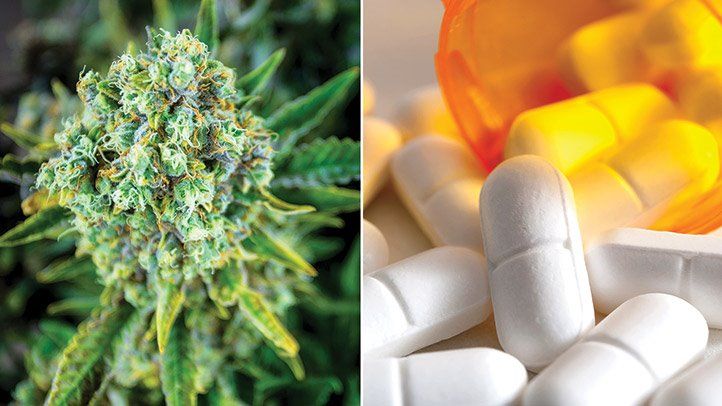It seems evident that it should be a simple, objective decision when a percentage of THC is placed on the back of a label. Tests are made, results are read, and a factual number is produced.
But in California, a free market competition with little regulation has taken most of the science out of the equation.
There are only a few labs in the state, and each of them are fighting against each other for more clients. There are only a limited amount of ways in which they can do this legally (faster turnarounds, cheaper prices) so a new category has been created by advertising higher potencies than competitors.

An advertisement from a lab in California, boasting of better results in potency.
Higher potency results in higher prices, so it’s a very valuable resources for sellers. But if these numbers aren’t accurate, it’s the consumers who are getting duped.
Some leniency on numbers is already given. The THC percentage is allowed to be within 10% of the actual potency (which already seems like a pretty forgiving range). However, a few labs have teamed up to test the numbers coming out from California, and have found the numbers skewing much further than this.
According to an article at Cannabis Industry Journal, out of 150 randomly chosen flower samples, over half of them were more than 20 percentage points off from what was written on the label. That’s a huge discrepancy, meaning you could be buying something thinking that it had 60% THC but in actuality only had 40%.
There is zero punishment for falsifying numbers on the lab level, and that has to change. The responsibility falls in the hands of the DCC (Department of Cannabis Control) and Cannabis Industry Journal has laid out some steps that can help enforce a stricter reading of potency levels:
- Perform routine surveillance sampling and testing of products off of store shelves either at the DCC’s internal lab or by leveraging DCC licensed private labs.
- Recall products found to be guilty of extreme levels of potency inflation.
- Conduct in-person, unannounced audits of all labs, perhaps focusing on those reporting statistically higher THC results.
- Conduct routine round-robin studies where every lab tests the same sample and outliers are identified.
- Shutdown labs that are unable or unwilling to remediate their potency inflation issues.
Read the original article over at CIJ.







